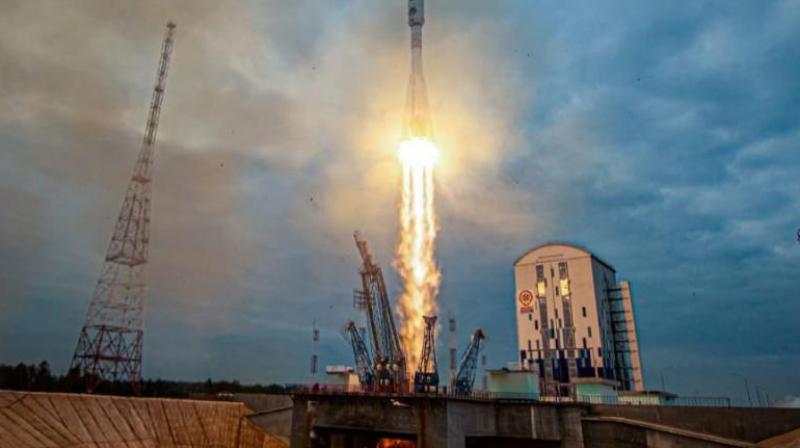Technical Glitch Plagues Russia’s Luna-25 Moon Mission, Landing Uncertainty Looms!

Moscow: Russia’s much-anticipated Luna-25 spacecraft has encountered a critical technical malfunction just moments before its scheduled lunar landing. The spacecraft, a key project by Russia’s national space agency, Roscosmos, experienced an anomalous event during its transition into the pre-landing orbit phase.
This Unexpected hiccup raises questions about the feasibility of Luna-25’s intended moon landing, slated to occur on Monday. The landing has been closely watched as it marks a competitive race among global superpowers to explore previously uncharted lunar terrains, especially areas believed to contain frozen water and valuable resources.
Roscosmos issued a concise statement on Saturday, acknowledging the occurrence of an “abnormal situation” during the spacecraft’s operations. This situation prevented the spacecraft from adhering to its prescribed maneuvering parameters. Experts are currently investigating the incident, although specific details were not disclosed.
Luna-25’s entry into lunar orbit occurred just days before the mishap. The mission represents Russia’s reentry into lunar exploration after a significant hiatus since 1976. The ambitious spacecraft carries a lander with a launch weight of 1,750 kg, accompanied by a package of Russian scientific instruments weighing 30 kg, all intended for a controlled landing on the moon’s surface. The chosen landing site, situated near Boguslavsky Crater in the moon’s southern polar region at approximately 70 degrees south latitude, adds to the mission’s complexity.
Approximately the size of a small car, Luna-25 is designed to operate for a year at the moon’s southern pole. Its primary objective is to scour the lunar surface for traces of water and conduct experiments related to this endeavor. The mission holds great significance for the global scientific community as water on the moon could revolutionize our understanding of lunar history and potential resource utilization.
Notably, Luna-25’s predicament arrives at a time when other lunar missions are also in progress. India’s Chandrayaan-3 spacecraft, launched on July 14, recently entered lunar orbit on August 5 and is set to attempt a landing in the moon’s southern polar region on August 23. Simultaneously, Japan’s JAXA is gearing up to launch its Smart Lander for Investigating Moon (SLIM) on August 25 via the H-2A rocket. SLIM’s landing aims to demonstrate precision landing technology near the Shioli Crater at 13 degrees south latitude, approximately four to six months after launch.


